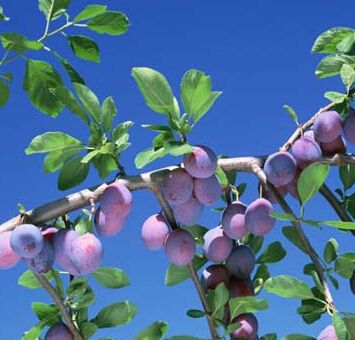Morphological characteristics Deciduous small trees, up to 10m high. Bark grayish, branchlets slender, tip thorns. Leaves alternate; petiole 1.5 cm long, pubescent; stipules caducous; leaf blade elliptic-shaped broadly ovate, spring first leaves flowering, aroma, 1-3 clustered in biennial lateral branch leaf axils. Pedicel short; calyx usually red-brown, but some species of calyx is green or green-purple; petals 5 white or pale red, about 1.5cm in diameter, broadly obovate; stamens numerous. Fruit nearly spherical, 2-3cm in diameter, yellow or greenish white, pubescent; nucleus elliptic, apex at tip, vents on ventral surface and dorsal ribs, surface with cellular holes. Flowering spring, fruiting period from May to June. With strong roots and developed roots, the new roots begin to grow at temperatures of 4-5 degrees Celsius, and as the temperature rises, the roots grow faster. The new root grows fastest in the late spring and early summer each year, and a large number of lateral roots grow. The apical dominance of the plant is obvious. From a growing branch, a few long plants are usually extracted from the apex, in which the majority of the lower side buds produce short shoots. When these short branches are properly bred, they can form many flower buds, which form fruit and short fruit branches. There is no difference in the thickness of the base between the long branches and the top. Easy to bend sagging. If the long main branch is allowed to open, and the elevation angle falls below 30 degrees, a large number of leggy branches will be drawn, disturbing the tree shape and causing shading. The lower branches of the canopy will languish and die, leading to the peripheral consequences of the canopy and increasing ineffective space. Appropriate short-cut long branches can promote the growth of medium and short fruit branches. Plants bloom in February-March each year. After flowering, the fruit develops gradually. The fruit development process can be divided into three periods, that is, the period from March to March is the early stage of hard nucleus, which is the time of rapid growth of young fruit; in the middle and late May, it enters the hard nucleus stage, and the nucleus of the fruit begins to harden and completely harden; in June After entering the hard core later in the early period, the fruit increased rapidly until the harvest time, and growth slowed down. In the young fruit period, sun exposure, night rainfall, or excessive temperature during the day can cause serious fruit drop. In the process of fruit development, the phenomenon of physiological fruit drop is more serious, and there are generally three peak periods: early fruit drop is about 10 days after flowering stage, and falls off with the decline of flowers; the second drop is about 30 days after flowering, which is due to Caused by fertilization and malnutrition; the third fruit drop in the hard-core stage to full maturity is caused by too much result and nitrogen fertilizer. Black Flex Tape,Asphalt Repair Tape,Black Flex Seal Tape,Waterproof Bitumen Tape Kunshan Jieyudeng Intelligent Technology Co., Ltd. , https://www.jerrytapes.com